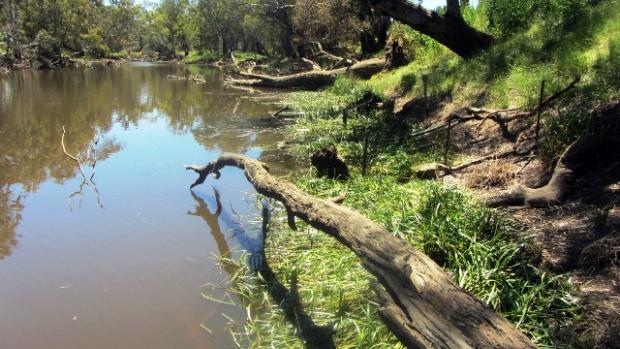Loading
And the winner is ….

In 1993, Paul Keating was was Prime Minister, Shane Warne delivered the ball of the century, the Baby Bombers won the AFL premiership, Fred Hollows and Weary Dunlop died, Sydney was chosen to host the 2000 Olympic Games and Meatloaf topped the Australian music charts.
It was also the last time the Campaspe River had a year this good.
The construction of the Eppalock reservoir in the 1960s has had a significant impact on the health of the Campaspe.
The North Central Catchment Management Authority (CMA) has outlined a flow regime it believes is the best that can possibly occur under river regulation.
The series of flows are the ideal of what the river needs to move towards being as healthy as it can be, with the caveat it is still used for irrigation, and the Eppalock outlet structure prevents large managed flows.
Some of those flows are the result of Mother Nature, such as floods and bank-full events. Others need to be managed, such as winter and summer low-flows and pulses.
This financial year will be the first time since 1992-93 the Campaspe River will receive all the flows it needs to thrive.
“The 2016 floods and high flows came at the best time of the year for the overall health of the river,” North Central CMA Environmental Water Manager Louissa Rogers said.
“While floods have good and bad effects on a river, managing flows before and after them enables us to limit those negative impacts.
“It also means there is enough water in the system to manage healthy river flows at other times of the year. Rivers need different amounts of water at different times of the year to thrive, and that will be achieved this year.”
Ms Rogers said the impact of the Eppalock dam wall and irrigation meant the natural flows of the Campaspe were turned upside down.
“Regulation such as this impacts the river and everything that relies on it to survive,” she said.
“Plants and animals have evolved over millions of years to expect strong flows in the wetter months, but irrigation has resulted in water flowing predominantly in summer and autumn.
“By managing river flows all-year round, we can do what we can to keep the river in good health. This year, every single one of our targets has been met and the river is looking great.”
The magnificent river red gums that line the Campaspe are thriving, native fish are coming back into the system and our vegetation is healthy.
“We have seen fish like the critically endangered silver perch in areas of the Campaspe where we haven’t seen them for a long time ” Ms Rogers said.
“And we have noticed fish such as the threatened Murray Darling rainbowfish coming back. That all points to a very healthy river system.
“Over the past 10 years we have created a flow regime and pattern that has set a great base. Now is the perfect time to capitalise on that.”
Ms Rogers said a rare opportunity now existed to set the river up for a long time.
“We now have a once-in-a-generation opportunity to significantly increase the health of the Campaspe,” she said.
“We have a chance to build on the great year the river has had and create some real, long-lasting benefits.
“That will start by our yearly winter and spring low flow. About 200ML a day will head down the river until November.
“This will do a number of things. We can finally plan for widespread growth of in-stream vegetation, which is great for everything that lives in the river. We can also build on the fantastic fish numbers and create a home they want to stay and raise a family in.
“And we water vegetation such as sedges and rushes that help stabiolies the bankc, trap leaf litter and provide food.
And the community will also benefit from a healthy river. The campers, the anglers, the bushwalkers and the locals are starting to see the fruits of the past decade.
“The Campase River is a shining example of what responsible healthy-river management can do, and showcases the impacts the Victorian Government’s Water for Victoria plan can have on waterways and communities.”
The flows are authorised by the Victorian Environmental Water Holder in line with its Seasonal Watering Plan 2016-17. The VEWH Seasonal Watering Plan 2016-17 is available for download from www.vewh.vic.gov.au, with regular watering updates posted on the North Central CMA website www.nccma.vic.gov.au.
